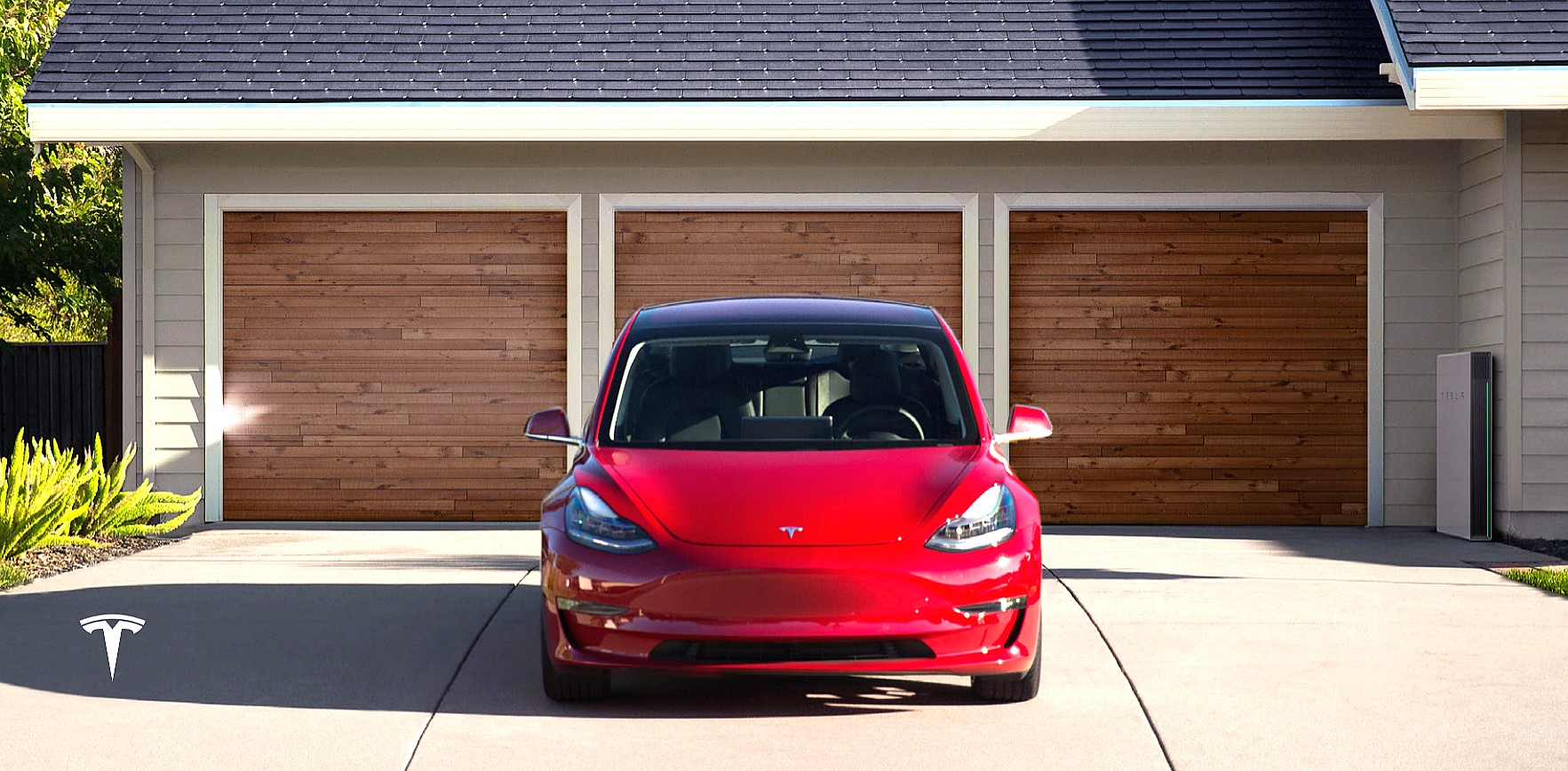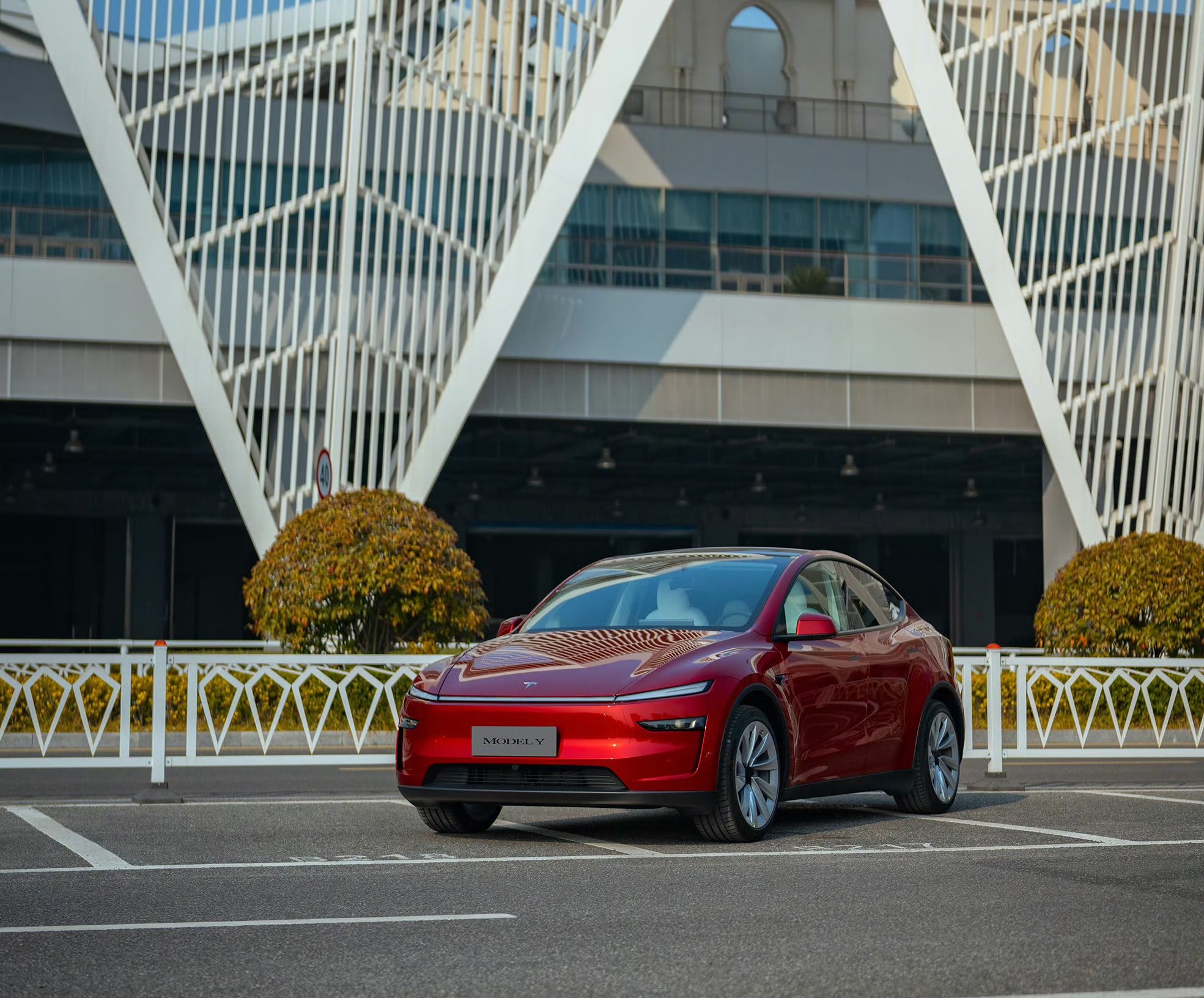

News
Tesla and other EVs’ potential to reduce emissions is widely underestimated: study
There are a lot of misconceptions about electric vehicles, but arguably the most prominent is the argument that EVs pollute more than their internal combustion engine-powered counterparts. Despite being debunked over and over again by people like Tesla CEO Elon Musk and organizations like Bloomberg NEF, the “long tailpipe” myth has remained incredibly persistent.
A recent study from electric mobility expert Auke Hoekstra has concluded that electric vehicles actually have the potential to be far cleaner than expected, especially since battery manufacturing and the power grid will likely not remain static. As the adoption of more efficiencies in battery manufacturing are rolled out and as more and more energy is gathered through renewable sources, the greenhouse gas emissions of electric cars like the Tesla Model 3 will see a dramatic reduction.
The findings of Hoekstra et al. stand in stark contrast to the conclusions of a study published by scientists Christoph Buchal, Hans-Dieter Karl and Hans-Werner Sinn earlier this year, who claimed that a Tesla Model 3 pollutes more than a Mercedes-Benz C 220 d due to the greenhouse gas emissions involved in the production of the electric car’s batteries. This conclusion, according to Hoekstra, has several critical mistakes.
For one, researchers such as Buchal et al. tend to overestimate the emissions produced in the battery manufacturing process. Hoekstra noted that around 65 kg of greenhouse gas emissions is emitted for every kWh of battery produced, which includes extracting and refining raw materials and actually producing the battery cells themselves. Buchal’s study estimated that the Model 3 emits 145–195 kg/kWh for its battery production, which does not take into account new chemistries that are adopted for battery production, or improvements in the cell manufacturing process.
The lifetime of batteries is also grossly underestimated in studies that allege EVs pollute more (or marginally less) than gas cars. In Buchal et al.’s case, for example, the scientists estimated that the Model 3’s batteries would only last 150,000 km (around 93,000 miles) before they are scrapped. This is a miscalculation, considering that current-generation batteries are estimated to last at least 1,500 to 3,000 cycles before they lose 20% of their capacity. For a vehicle like a Tesla Model 3 with Dual Motor AWD, which has a range of 310 miles, this would give the car around 747,000 km (about 464,000 miles) on the low end (1500 cycles) before their batteries would need replacing. And even after this, the batteries are recycled, not discarded, as noted by Elon Musk.
Perhaps the most notable miscalculation from EV critics is that many fail to account for the fact that electricity itself is getting greener with the adoption of renewable energy solutions. Battery-electric vehicles in some areas of the globe might be driving on power generated from coal today, but that will not always be the case. If an EV is driven on renewable energy sources, Hoekstra estimates that the battery-powered vehicles’ emissions would drop by a factor of 10. And that’s computing it using current-generation renewable technology.
The struggle for the future’s preferred form of propulsion will continue to be waged between batteries/electric motors and fossil fuels/internal combustion engine. Yet, it is essential to note that the internal combustion engine is already a mature technology that has likely reached its peak. Battery-powered cars, on the other hand, are only getting started. Heralded by the Model 3, the advent of disruptive vehicles like the new Tesla Roadster, the Rivian R1T pickup, or even the Porsche Taycan could ultimately seal the deal on electricity being the preferred source of propulsion in the years to come.
An Abstract of Hoekstra et al.’s study could be accessed here.
Elon Musk
Tesla analysts believe Musk and Trump feud will pass
Tesla CEO Elon Musk and U.S. President Donald Trump’s feud shall pass, several bulls say.

Tesla analysts are breaking down the current feud between CEO Elon Musk and U.S. President Donald Trump, as the two continue to disagree on the “Big Beautiful Bill” and its impact on the country’s national debt.
Musk, who headed the Department of Government Efficiency (DOGE) under the Trump Administration, left his post in May. Soon thereafter, he and President Trump entered a very public and verbal disagreement, where things turned sour. They reconciled to an extent, and things seemed to be in the past.
However, the second disagreement between the two started on Monday, as Musk continued to push back on the “Big Beautiful Bill” that the Trump administration is attempting to sign into law. It would, by Musk’s estimation, increase spending and reverse the work DOGE did to trim the deficit.
Every member of Congress who campaigned on reducing government spending and then immediately voted for the biggest debt increase in history should hang their head in shame!
And they will lose their primary next year if it is the last thing I do on this Earth.
— Elon Musk (@elonmusk) June 30, 2025
President Trump has hinted that DOGE could be “the monster” that “eats Elon,” threatening to end the subsidies that SpaceX and Tesla receive. Musk has not been opposed to ending government subsidies for companies, including his own, as long as they are all abolished.
How Tesla could benefit from the ‘Big Beautiful Bill’ that axes EV subsidies
Despite this contentious back-and-forth between the two, analysts are sharing their opinions now, and a few of the more bullish Tesla observers are convinced that this feud will pass, Trump and Musk will resolve their differences as they have before, and things will return to normal.
ARK Invest’s Cathie Wood said this morning that the feud between Musk and Trump is another example of “this too shall pass:”
BREAKING: CATHIE WOOD SAYS — ELON AND TRUMP FEUD “WILL PASS” 👀 $TSLA
She remains bullish ! pic.twitter.com/w5rW2gfCkx
— TheSonOfWalkley (@TheSonOfWalkley) July 1, 2025
Additionally, Wedbush’s Dan Ives, in a note to investors this morning, said that the situation “will settle:”
“We believe this situation will settle and at the end of the day Musk needs Trump and Trump needs Musk given the AI Arms Race going on between the US and China. The jabs between Musk and Trump will continue as the Budget rolls through Congress but Tesla investors want Musk to focus on driving Tesla and stop this political angle…which has turned into a life of its own in a roller coaster ride since the November elections.”
Tesla shares are down about 5 percent at 3:10 p.m. on the East Coast.
Elon Musk
Tesla scrambles after Musk sidekick exit, CEO takes over sales
Tesla CEO Elon Musk is reportedly overseeing sales in North America and Europe, Bloomberg reports.

Tesla scrambled its executives around following the exit of CEO Elon Musk’s sidekick last week, Omead Afshar. Afshar was relieved of his duties as Head of Sales for both North America and Europe.
Bloomberg is reporting that Musk is now overseeing both regions for sales, according to sources familiar with the matter. Afshar left the company last week, likely due to slow sales in both markets, ending a seven-year term with the electric automaker.
Tesla’s Omead Afshar, known as Elon Musk’s right-hand man, leaves company: reports
Afshar was promoted to the role late last year as Musk was becoming more involved in the road to the White House with President Donald Trump.
Afshar, whose LinkedIn account stated he was working within the “Office of the CEO,” was known as Musk’s right-hand man for years.
Additionally, Tom Zhu, currently the Senior Vice President of Automotive at Tesla, will oversee sales in Asia, according to the report.
It is a scramble by Tesla to get the company’s proven executives over the pain points the automaker has found halfway through the year. Sales are looking to be close to the 1.8 million vehicles the company delivered in both of the past two years.
Tesla is pivoting to pay more attention to the struggling automotive sales that it has felt over the past six months. Although it is still performing well and is the best-selling EV maker by a long way, it is struggling to find growth despite redesigning its vehicles and launching new tech and improvements within them.
The company is also looking to focus more on its deployment of autonomous tech, especially as it recently launched its Robotaxi platform in Austin just over a week ago.
However, while this is the long-term catalyst for Tesla, sales still need some work, and it appears the company’s strategy is to put its biggest guns on its biggest problems.
News
Tesla upgrades Model 3 and Model Y in China, hikes price for long-range sedan
Tesla’s long-range Model 3 now comes with a higher CLTC-rated range of 753 km (468 miles).

Tesla has rolled out a series of quiet upgrades to its Model 3 and Model Y in China, enhancing range and performance for long-range variants. The updates come with a price hike for the Model 3 Long Range All-Wheel Drive, which now costs RMB 285,500 (about $39,300), up RMB 10,000 ($1,400) from the previous price.
Model 3 gets acceleration boost, extended range
Tesla’s long-range Model 3 now comes with a higher CLTC-rated range of 753 km (468 miles), up from 713 km (443 miles), and a faster 0–100 km/h acceleration time of 3.8 seconds, down from 4.4 seconds. These changes suggest that Tesla has bundled the previously optional Acceleration Boost for the Model 3, once priced at RMB 14,100 ($1,968), as a standard feature.
Delivery wait times for the long-range Model 3 have also been shortened, from 3–5 weeks to just 1–3 weeks, as per CNEV Post. No changes were made to the entry-level RWD or Performance versions, which retain their RMB 235,500 and RMB 339,500 price points, respectively. Wait times for those trims also remain at 1–3 weeks and 8–10 weeks.
Model Y range increases, pricing holds steady
The Model Y Long Range has also seen its CLTC-rated range increase from 719 km (447 miles) to 750 km (466 miles), though its price remains unchanged at RMB 313,500 ($43,759). The model maintains a 0–100 km/h time of 4.3 seconds.
Tesla also updated delivery times for the Model Y lineup. The Long Range variant now shows a wait time of 1–3 weeks, an improvement from the previous 3–5 weeks. The entry-level RWD version maintained its starting price of RMB 263,500, though its delivery window is now shorter at 2–4 weeks.
Tesla continues to offer several purchase incentives in China, including an RMB 8,000 discount for select paint options, an RMB 8,000 insurance subsidy, and five years of interest-free financing for eligible variants.
-

 Elon Musk24 hours ago
Elon Musk24 hours agoTesla investors will be shocked by Jim Cramer’s latest assessment
-

 News6 days ago
News6 days agoTesla Robotaxi’s biggest challenge seems to be this one thing
-

 News2 weeks ago
News2 weeks agoTesla’s Grok integration will be more realistic with this cool feature
-

 Elon Musk2 weeks ago
Elon Musk2 weeks agoElon Musk slams Bloomberg’s shocking xAI cash burn claims
-

 News2 weeks ago
News2 weeks agoTesla China roars back with highest vehicle registrations this Q2 so far
-

 News2 weeks ago
News2 weeks agoTesla dominates Cars.com’s Made in America Index with clean sweep
-

 News2 weeks ago
News2 weeks agoTexas lawmakers urge Tesla to delay Austin robotaxi launch to September
-

 Elon Musk1 week ago
Elon Musk1 week agoFirst Look at Tesla’s Robotaxi App: features, design, and more















